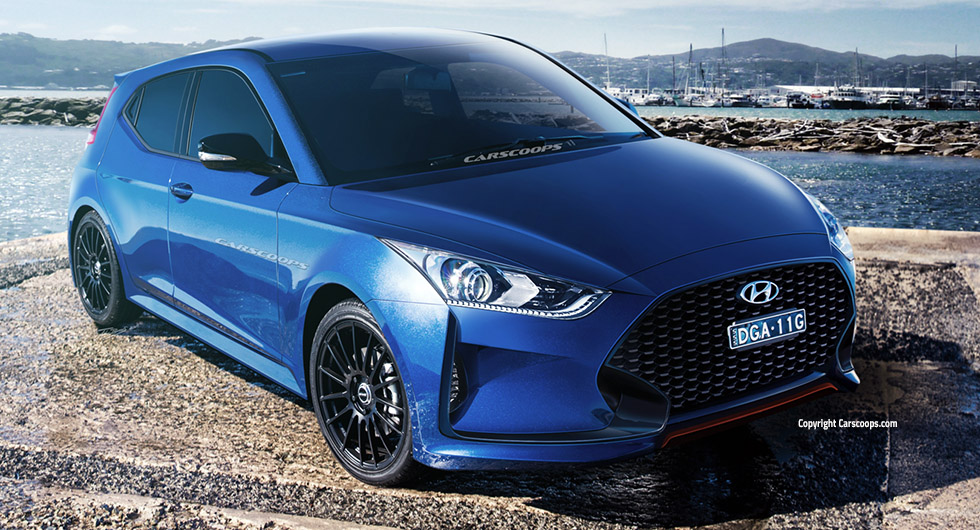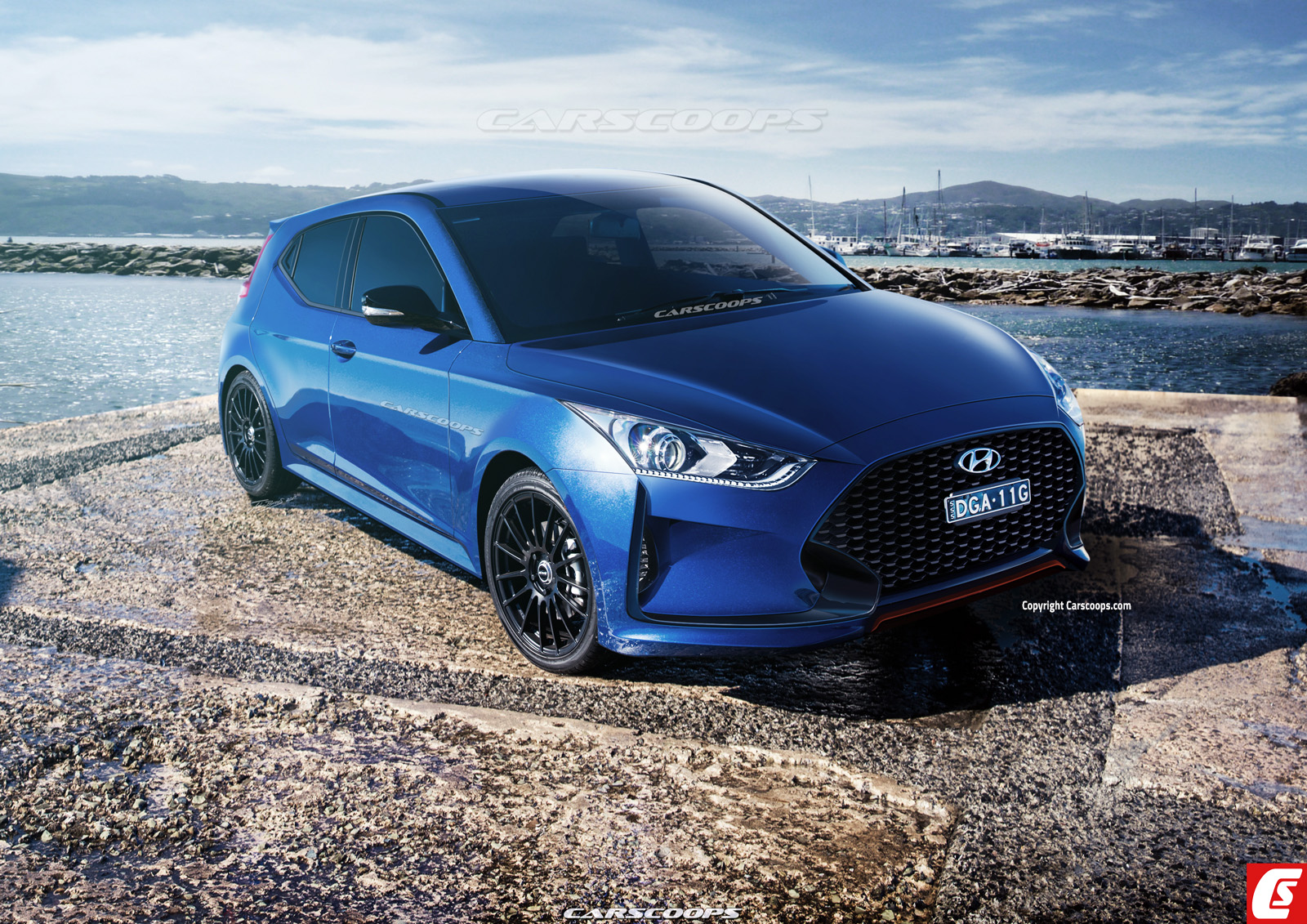Hyundai’s ageing Veloster is one of those cars that you either love or hate. Quirky, odd, lop-sided or even edgy, whatever you think about it, there is no denying it’s different.
However, with the next-generation Veloster in development, will Hyundai ditch that extra passenger side door? Fear not, as the Korean carmaker is retaining the same layout, as our prototype car-based illustration demonstrates. It also gets a more streamlined look. So let’s delve further.
Asymmetric Styling:
Immediately, one will notice more maturity to the new design, as the somewhat bulbous nature of the current car’s styling has been refined. Hyundai’s signature trapezoidal mesh grille has grown and become rather angrier in the process, echoing that of the latest I30 hatch. Red highlights on the lower front lip emphasize its sporty credentials, as do the fender flares and sharp bodywork creases.
Out back, the small hatch has a wide stance, reinforced by horizontal tail-lamps that fire vertically up against the hatch glass, and twin exhausts exit centrally, as per the current car.
An Improved Cabin:
There is much conjecture about the interior at this stage. What we do know, is the current car suffers from a lack of head and foot-room in the rear – and that’s after you’ve bashed your head against the roof trying to get in.
Early indications are the new Veloster will have these issues addressed, accompanied by a much improved premium-feel atmosphere. Expect a new 8.0-inch multimedia infotainment system with Android Auto and Apple Car Play, plus a vast array of driver assist features.
Powertrain and Handling:
Even though the Veloster is labelled a sports car, its current engine lineup doesn’t exactly fit the cache with barely adequate performance. For 2018, expect a much more potent GDI 1.6-liter powertrain channeling its power through a snappy 7-speed, dual-clutch automatic or a 6-speed manual. Dynamics are currently not the Veloster’s strong suite, so we’d expect big improvements in ride, steering and handling too.
The Veloster is also believed to be honed by Hyundai’s N performance division offering a much more powerful 2.0-liter turbo engine with at least 250 horses driving the front wheels through an electronically controlled limited-slip differential, an aggressive aero suit, along with upgrades suspension, steering and brakes.
Sporting Rivals:
Arguably, you could consider the Veloster as a rival to many different types of cars, from the acclaimed Mazda MX-5 and Toyota/Subaru 86/BRZ twins, to the Mini Cooper S, Renault Clio RS200, Ford Fiesta ST and Volkswagen Polo GTi.
As for the expected launch, look for a reveal in the coming months, with an on-sale date in late 2017 or early next year.
By Josh Byrnes
Photo Renderings Copyright Carscoops / Josh Byrnes




